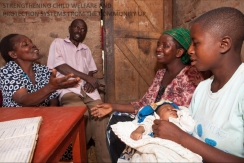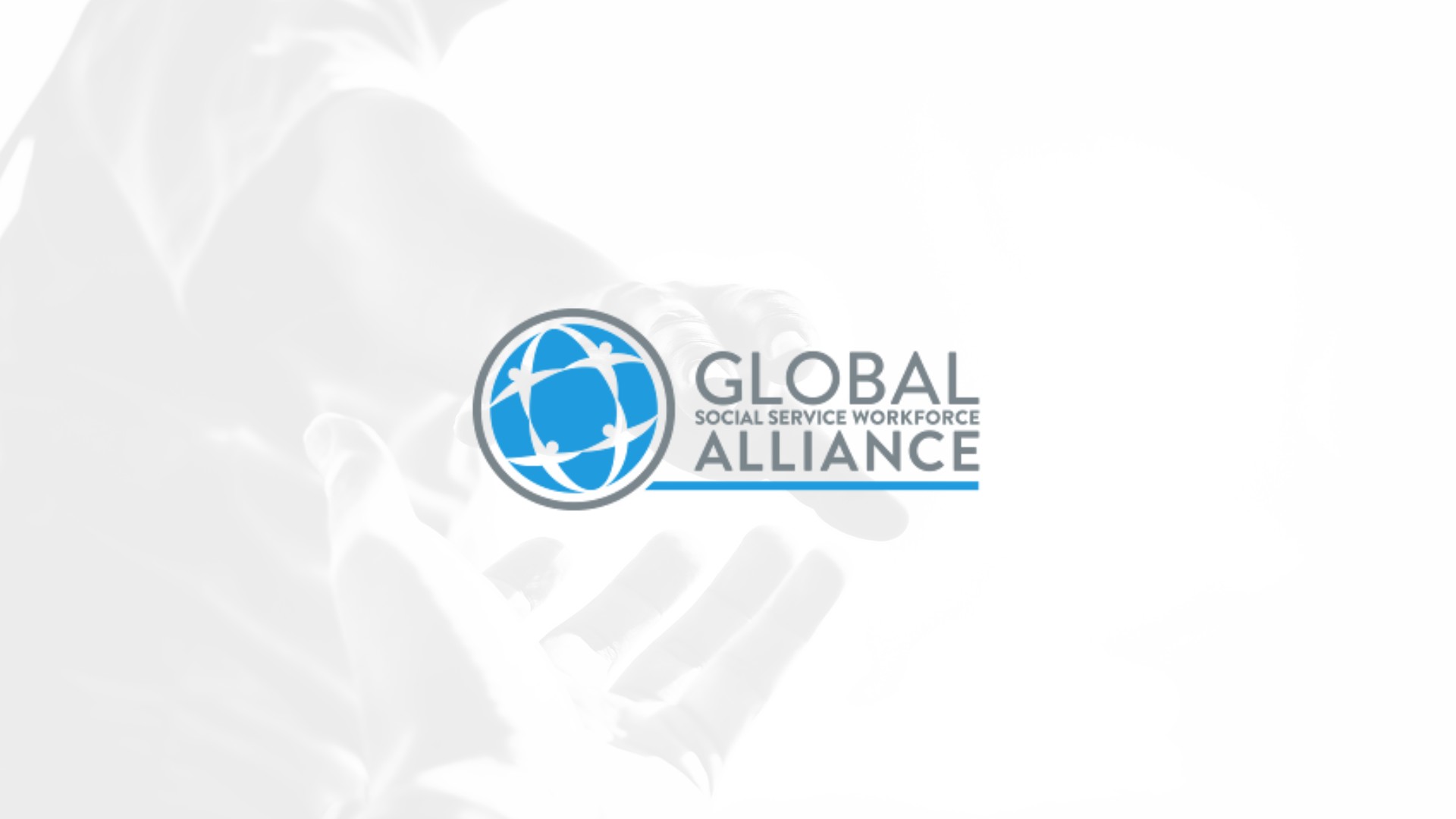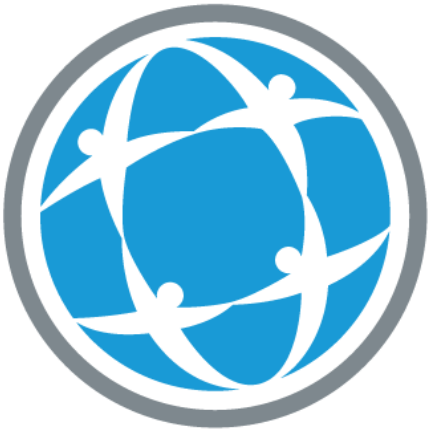by Grace Mayanja, Chief of Party, USAID SUNRISE-OVC Project, Uganda
Orphaned as a child in a community heavily affected by HIV/AIDS, Doreen was defiled and became pregnant at 15, but she was determined to stay in school. She dropped out when students and school authorities shunned and stigmatized her, but with support from a community social worker, Doreen returned to school. The social worker advocated on Doreen’s behalf, lobbying and sensitizing parents, teachers and students. Doreen is one of the few girls who have returned to school after having a child.
Internationally there is growing attention to the prevalence of violence against children and huge momentum around preventing and addressing violence against children. Many studies, such as the Violence Against Children Studies (VAC), have added to the growing body of evidence that demonstrates how violence against children and the exploitation of children are global social, economic, human rights and public health issues, with significant negative health and social impacts.
Strategies to address violence, such as those outlined by THRIVES, reflect available evidence to help countries sharpen their focus on violence prevention priorities. UNICEF’s #Endviolence campaign has helped to foster global consensus that violence against children is unacceptable, and has also promoted strategies to prevent and respond to violence.
In Uganda, an estimated 25% of teenage girls are sexually abused, resulting in child motherhood and a high risk of HIV/AIDS and other sexually-transmitted infections (Uganda National Household Survey 2012/13). In addition, 38% of children experience violence at home and 32% at school. The evidence shows that children and adolescents in Uganda continue to face sexual exploitation, early marriages, human trafficking, drug and substance abuse, involvement in social unrest, and engaging in criminal activities.
We ask is enough being done to respond to the child protection needs of children affected by violence?
Protecting children from violence: the need to work together
Through our experience of supporting children in Uganda, we take a look at the role of community action in this area.
Grace Mukakimenyi is a government community development worker in the sub-county of Katikamu in Luwero district, Uganda. Through a process of community mapping, the most critically vulnerable families were identified in Grace’s area. This data was collected as part of the International HIV/AIDS Alliance-led, USAID funded, SUNRISE-OVC project which worked with local government and communities to improve services for children. Grace says, “Before SUNRISE, we didn’t know whether we were providing the right services to the right people.”
The role of community level workers
When it comes to integrating services, community workers play an essential role in creating demand for other services.
In the context of task-shifting, the concept of using community members to deliver certain basic health and social welfare services to their communities has gained currency. In 2013, the International HIV/AIDS Alliance conducted a systematic literature review of the role of volunteer community health workers in HIV care in sub-Saharan Africa. The study found that these workers clearly contributed to HIV service delivery and to strengthening the human resource capacity in their communities.
Evidence of the crucial role community level workers can play in preventing and addressing violence against children has been demonstrated by a five-year, USAID-PEPFAR funded project working with orphans and other vulnerable children (OVC) in Uganda.
The USAID Strengthening Local Government Responses for Orphans and Other Vulnerable Children (SUNRISE-OVC) project adopted a systems’ approach to protecting and caring for orphans and other vulnerable children. The project focused on strengthening district and community level systems by working with the central line ministry to increase capabilities and better respond to the needs of orphans and other vulnerable children in communities identified with high levels of child abuse and neglect to help improve each link in the child protection and care system. The ultimate goal was to support every orphan and other vulnerable children to attain their full potential.
The training of an army of 11,700 para professional social workers has been instrumental in supporting local government staff to identify vulnerable families, making first contact and referring them to services.
 All the para social workers are community volunteers. They were already part of informal community groups such as village health teams and community development committees; others were local religious leaders or members of people living with HIV or adult literacy groups and therefore already active in the community. They received training in child protection, community mobilization, child abuse identification and reporting procedures, advocacy and data collection, using government and UNICEF developed curriculum.
All the para social workers are community volunteers. They were already part of informal community groups such as village health teams and community development committees; others were local religious leaders or members of people living with HIV or adult literacy groups and therefore already active in the community. They received training in child protection, community mobilization, child abuse identification and reporting procedures, advocacy and data collection, using government and UNICEF developed curriculum.
Community para social workers conduct home visits to OVC families to ensure that children are in school and link families to more formal social service providers to support their well-being. Doreen, a 17-year-old mother and student, is an example of how the project has made a difference among Uganda’s youth.
Getting Results
Over 1 million children have benefited indirectly but all vulnerable children and families gain from a strengthened government and community systems. As USAID’s Mission Director Leslie Reed said, “When the child social welfare and protection system is functioning effectively, families and children have access to an array of quality services that promote wellness and protect them from harm.”
Para professionals are consistently identifying vulnerable families, providing first level response and referring them to services and to sub-county Community Development Officers. The system of identifying, responding and referring means an increase in preventing, responding and protecting OVC against abuse, neglect, violence and exploitation. These volunteers provide critical links between families and government services. Evidence from 43 of the districts in which SUNRISE-OVC operated indicate the majority (79%) saw a decrease in the number of orphans and other vulnerable children experiencing abuse between 2011 and 2014.
Through the work of community para social workers, the community has increased its understanding of child protection through community dialogue, and local government staff have increased their capacity at community level.
The impact of SUNRISE-OVC provides further evidence that a commitment to community systems strengthening including community level workers – which lies at the heart of growing movements such as the 1mCHW Campaign – must be adopted by those programming for vulnerable, hard to reach groups.
Useful Links
On this second day of Social Service Workforce Week, we are featuring worker profiles that display the skills and dedication that community level workers bring to addressing child protection issues. Please take some time to read these worker profiles on our website:
- Sowedi Kitanywa, Senior Probation and Welfare Officer, Kasese District, Uganda
- Kiko Joyce, Child Case Care Worker, Bantwana Initiative, Uganda
Please take a look at this SUNRISE-OVC project memoir.
For additional success stories, click on these links to see two of Uganda SUNRISE-OVC project case studies:
- A Case Study Highlighting the Results of Integrated Child Protection and Care Treatment Programming in Namutumba, Uganda
- Creative Community-Led Approaches to Preventing & Responding to Child Abuse: A case study in Uganda
Read this blog posted on the Global Social Service Workforce Alliance website by Kate Iorpenda, Senior Advisor on Children and Impact Mitigation, following her trip to Uganda to see the work of the SUNRISE-OVC project.
Take a few minutes to watch this video produced by CRS on addressing violence against children in Malawi.
Do you have more examples? Join the conversation and tweet them using #SSWWeek or send them to us via email and the Alliance will help to promote your work.



